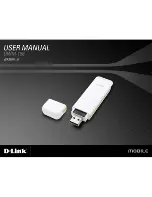
S e n d d o c u m e n t a t i o n c o m m e n t s t o m d s f e e d b a c k - d o c @ c i s c o . c o m
59-5
Cisco MDS 9000 Family CLI Configuration Guide
OL-16184-01, Cisco MDS SAN-OS Release 3.x
Chapter 59 Monitoring System Processes and Logs
Core and Log Files
•
In a Cisco MDS 9506 or Cisco MDS 9509 switch, the last four reset-reason codes for the supervisor
module in slot 5 and slot 6 are displayed. If either supervisor module is absent, the reset-reason
codes for that supervisor module are not displayed.
•
In a Cisco MDS 9200 Series switch, the last four reset-reason codes for the supervisor module in
slot 1 are displayed.
•
The
show system reset-reason module
number
command displays the last four reset-reason codes
for a specific module in a given slot. If a module is absent, then the reset-reason codes for that
module are not displayed.
Use the
clear system reset-reason
command to clear the reset-reason information stored in NVRAM
and volatile persistent storage.
•
In a Cisco MDS 9500 Series switch, this command clears the reset-reason information stored in
NVRAM and volatile persistent storage in the active and standby supervisor modules.
•
In a Cisco MDS 9200 Series switch, this command clears the reset-reason information stored in
NVRAM and volatile persistent storage in the active supervisor module.
Example 59-10 Displays System Uptime
switch#
show system uptime
Start Time: Sun Oct 13 18:09:23 2030
Up Time: 0 days, 9 hours, 46 minutes, 26 seconds
Use the
show system resources
command to display system-related CPU and memory statistics (see
Example 59-11
).
Example 59-11 Displays System-Related CPU and Memory Information
switch#
show system resources
Load average: 1 minute: 0.43 5 minutes: 0.17 15 minutes: 0.11
Processes : 100 total, 2 running
CPU states : 0.0% user, 0.0% kernel, 100.0% idle
Memory usage: 1027628K total, 313424K used, 714204K free
3620K buffers, 22278K cache
Where:
•
Load average—Displays the number of running processes. The average reflects the system load over
the past 1, 5, and 15 minutes.
•
Processes—Displays the number of processes in the system, and how many are actually running
when the command is issued.
•
CPU states—Displays the CPU usage percentage in user mode, kernel mode, and idle time in the
last one second.
•
Memory usage—Displays the total memory, used memory, free memory, memory used for buffers,
and memory used for cache in KB. Buffers and cache are also included in the
used
memory statistics.
Core and Log Files
This section the following topics:
•
Displaying Core Status, page 59-6
















































